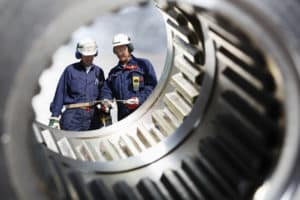Motivating Millennials, Gen Z, and more seasoned workers requires different approaches.
This is a common question we’re asked: How do you motivate a multi-generation workforce, especially while integrating the millennials with the more seasoned workers in your group?
First of all, retirements are accelerating. It’s estimated in the United States that 10,000 people a day are retiring. If you’re a Canadian, this number is around 1,000 people a day. Every time someone retires, a new opportunity is created to hire a millennial or generation Z.
In the manufacturing industry, more young people in their 20s and 30s are participating in our leadership classes. It reflects the age diversity in the workforce.
As a company, and as a leader, how do you meet the needs and engage your younger workers alongside your more seasoned workers?
Remember – no matter what age someone is, there are common motivators that are effective across the entire work group. You, as a leader, can use these common strategies for everyone.
Keep them in the loop. Employees want to be informed about what’s going on in their department and across the organization. Your job, as leader, is to communicate that consistently and regularly. 
Give them some variety. Employees don’t need constant variety, just a little bit of variety. People like routines; there is comfort in doing the same things over and over again. However, sprinkled in that routine we want to see something different that adds a bit of a challenge every once in a while.
The last universal motivator is seeing that leadership is interested in them as an individual. That means knowing when a family member might be sick or when one of their children is in a sports tournament. Make sure you are taking an interest in them to stay informed. If somebody tells you that they’re spending a lot of money to go on vacation, they definitely want you to ask how the vacation was when they come back to work.
Showing interest in them as a person and building a personal connection can make a big difference.
These next motivators are different, depending on the age group:
Feedback frequency. The younger someone is in their career, the more likely they need to be reassured as to how they’re progressing within the organization. They want to know how they’re doing in relation to the leader’s expectations.
As a leader, make yourself available to your younger, newer workers so they have the opportunity to run things by you. This can help increase retention and engagement. Your younger, newer workers just want to talk to you to find out how they’re doing.
Your more seasoned workers likely don’t need a weekly one-on-one with you because they’re already very familiar with your expectations and requirements of the work.
Remember - no matter what age someone is, there are common motivators that are effective across the entire work group. Share on XYounger workers also desire to be consulted and involved. Your younger workers likely grew up being consulted on decisions within their family, like “What restaurant do you want to go to?” and “Where should we go on vacation?” They want to be asked, and it doesn’t matter if it’s their first day on the job, their third day on the job, or maybe they’ve been on the job for a few weeks. They don’t want to wait three months or three years to give their input. They want to give you their input right now. As a leader, be mindful of this and get into the habit of asking questions. More seasoned workers still want to be asked for their input, but it’s usually not as important to them as it is for a younger team member.
The younger generations in the workforce are going to be more interested in career progression. They want to know where they stand now, and what opportunities are available for future promotions and gaining a variety of experience.
Job mastery. Job mastery is building the skills you need to maximize performance. That might mean investing in training or coaching your younger team members so that they become really good at their job. Even though there is a risk that you might lose them, the reality is that it’s still better to do the training.
Create a positive work environment. When jobs were scarce and people were worried about being laid off or replaced, bosses got away with treating people poorly.
These days, if people don’t like the environment in your place of business, they’re going to find a job that’s more positive and leave. If you’re hoping for people to toughen up, it’s not going to happen. You need to change and become more positive as a leader.
Being able to change your motivational strategies so that they are effective with younger workers and more seasoned workers will make a big difference in retaining people and maximizing the performance of your work group.
